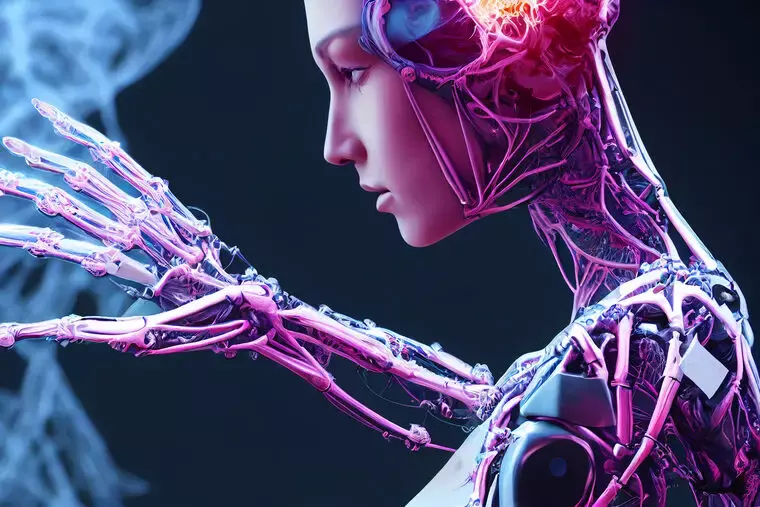Researchers at the University of Cambridge have developed a self-organizing, artificially intelligent brain-like system that emulates key aspects of the human brain’s functionality.
The study, published in Nature Machine Intelligence, reveals how imposing physical constraints on AI systems can lead to the evolution of brain-like characteristics, offering insights into human cognitive processes and the future of AI development.
When considered an integrated system, the human brain is a remarkable feat of nature. It is adept at optimizing information processing and energy efficiency to skillfully solve complex problems.
“Not only is the brain great at solving complex problems, it does so while using very little energy,” said Jascha Achterberg, a Ph.D. student at Cambridge’s MRC Cognition and Brain Sciences Unit and study co-author. “In our new work, we show that considering the brain’s problem-solving abilities alongside its goal of spending as few resources as possible can help us understand why brains look like they do.”
In the study, researchers successfully showed that by applying physical and energetic constraints to an AI system similar to those in human neural networks, they could develop an artificially intelligent brain-like system with organizational strategies and efficiencies akin to the human brain.
The Cambridge team’s AI system used computational nodes instead of neurons. Each node was assigned a location in a virtual space, mimicking the brain’s structure, where neuron proximity influences communication ease.
The system was then tasked with solving a maze navigation challenge. This challenge, often used in brain studies involving animals like rats, requires integrating various pieces of information to find the maze’s shortest path.
Initially, the artificially intelligent brain-like system doesn’t know the correct path through the maze. However, as it continued to run into dead ends, the system learned from its errors, adjusting the strength of its nodal connections and developing centralized node hubs for efficient information transfer.
Researchers observed that the AI system employed methods akin to human learning, utilizing strategies similar to those the human brain applies in solving complex problems.
Remarkably, the artificially intelligent brain-like system began to exhibit flexible coding, where individual nodes adapted to encode multiple aspects of the maze task at different times. This dynamic trait mirrors the human brain’s versatile information-processing capability.
“The AI system shows an internal structure similar to the human brain. That means that the ways individual parts and neurons of the AI are connected is similar to the way that different parts in the human brain are connected,” researchers wrote. “The AI system specifically shows a very ‘brain-like’ and energy efficient internal wiring.”
Study authors note that the artificially intelligent brain-like system’s ability to demonstrate how physical constraints shape individual brain differences could have significant implications for mental health research.
“Artificial ‘brains’ allow us to ask questions that it would be impossible to look at in an actual biological system,” Achterberg explained in a release by Cambridge University. “We can train the system to perform tasks and then play around experimentally with the constraints we impose to see if it begins to look more like the brains of particular individuals.”
Beyond neuroscience, the study holds significant promise for AI development. Modern AI solutions often superficially mimic brain structures. However, Cambridge’s research suggests that AI systems solving human-like problems might need architectures closely resembling actual brains, especially in scenarios with energy and physical constraints.
Co-lead author and Cambridge professor Dr. Danyal Akarca emphasized the considerable promise that insights from neurobiology hold for enhancing the efficiency of AI systems.
“AI researchers are constantly trying to work out how to make complex, neural systems that can encode and perform in a flexible way that is efficient. To achieve this, we think that neurobiology will give us a lot of inspiration,” Dr. Akarca said. “For example, the overall wiring cost of the system we’ve created is much lower than you would find in a typical AI system.”
Ultimately, this recent study suggests that by embracing the brain’s principles of efficiency and flexibility, AI can evolve into more sophisticated, energy-conscious forms that closely mirror the intricacies of human cognition.
The research also hints at a future where robots operating in dynamic, real-world environments could benefit from brain-like structures.
According to Achterberg, robots capable of processing vast, ever-changing information will likely require brain-like architectures that mimic the human brain to balance energy constraints with their computational needs.
“Brains of robots that are deployed in the real physical world are probably going to look more like our brains because they might face the same challenges as us. They need to constantly process new information coming in through their sensors while controlling their bodies to move through space towards a goal,” Achterberg explained.
“Many systems will need to run all their computations with a limited supply of electric energy, and so, to balance these energetic constraints with the amount of information it needs to process, it will probably need a brain structure similar to ours.”
Tim McMillan is a retired law enforcement executive, investigative reporter and co-founder of The Debrief. His writing typically focuses on defense, national security, the Intelligence Community and topics related to psychology. You can follow Tim on Twitter: @LtTimMcMillan. Tim can be reached by email: tim@thedebrief.org or through encrypted email: LtTimMcMillan@protonmail.com

